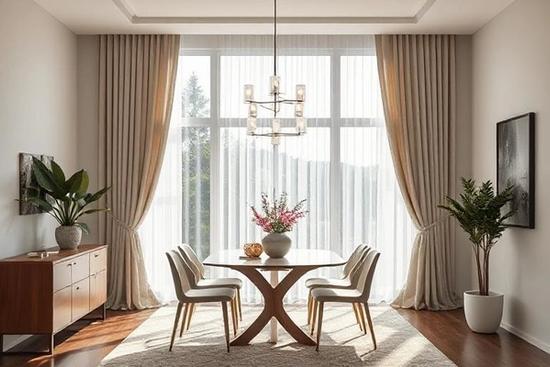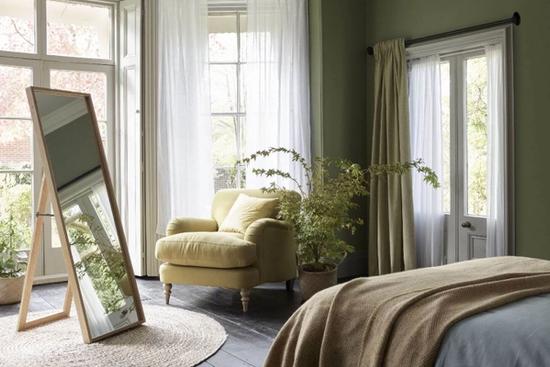Do Soundproof Curtains Work? Your Questions Answered

Are you dealing with noisy neighbors or loud disturbances at home? Consider blocking sound through your windows with soundproof curtains.
You may have heard of soundproof walls or technologies (like headphones) that can tune out other noises. But many of these options are expensive, impractical or uncomfortable to use.
Enter soundproof curtains, a lesser-known noise-canceling technology that can provide an effective solution for muffling noise.
Let’s take a closer look at soundproof curtains and the technology behind them.
What are Soundproof Curtains?
Soundproof curtains are window treatments made with multiple layers of thick, dense material that are also highly porous. Plush fabrics that could absorb water, like velvet or velour, are excellent choices for soundproof curtains.
If you’ve ever been in a home with no window coverings, you might notice an “echo” as you move through the rooms, especially if floors are uncarpeted. The noise can be unmanageable if coupled with outside elements like traffic, barking dogs or kids playing outside.
While most window treatments can absorb some sound, soundproof curtains are most effective in reducing noise. Loud noises may still be audible, but softer sounds are filtered out, creating a calmer, more peaceful environment.
Read More: The Best Window Treatment Ideas For Any Space
How Do Soundproof Curtains Work?
While soundproof curtains alone may not block all noises, they can help tremendously.
Soundproof curtains technically reduce noise. “Soundproof” is a misnomer, as you cannot block out all unwanted sound with curtains or even most walls. A more accurate description would be “sound absorbing.”
Soundproofing stops noise by blocking sound waves from traveling to adjacent spaces. Sound absorption limits the reverberation or echo of sound waves within an area.
Soundproof curtains absorb and deflect sounds. The curtain fabric’s pores are like sound traps that capture the energy and convert it to heat. Non-porous materials will reflect sound waves and are far less effective in noise reduction.
Advanced technology or construction is necessary to make a room genuinely soundproof, but this method is costly and impractical for basic residential needs.
Recording studios often build a “room within a room” and use insulation layers to ensure sound containment. However, this method is better at keeping sounds in a room versus keeping sounds out of a room. The soundproofing materials you would find in recording studios are also much thicker than practical for home use.
Are Blackout Curtains Soundproof?
Blackout curtains block light, so their construction is similar to soundproof curtains. But while soundproof curtains can be effective light blockers, blackout curtains aren’t always soundproof.
Blackout curtains are more substantial than regular curtains but aren’t designed with acoustics in mind. If you want to muffle sound, choose soundproof curtains (not blackout curtains) for the best results.
What’s the Difference Between Soundproof, Blackout and Energy Efficient Curtains?
Soundproof, blackout and energy-efficient curtains are often labeled interchangeably in retail packaging. All three types of curtains provide light blockage and are made of dense, layered fabrics.
However, soundproof and energy efficient curtains are heavier than blackout curtains. That’s because these curtains are meant to diffuse sound or provide more energy savings than blackout curtains.
Heat gain and loss through a home’s windows are responsible for 25-30% of residential heating and cooling energy use, so if utility savings are a priority, you may want to look into energy-efficient curtains.
Pros and Cons of Soundproof Curtains
If you’re still on the fence about soundproof curtains, consider the following:
PROS
Soundproof curtains have several advantages besides creating a more peaceful home environment.
- They save money on heating and cooling bills.
- They block light to help you sleep better.
- They add privacy.
- They install easily.
- They’re available at many retailers, both in stores and online.
CONS
Soundproof curtains also have a couple of downsides.
- They can make rooms look too dark. You can use holdbacks or tiebacks to keep curtains open during the day for more light, but this will reduce the sound-absorbing benefits.
- Soundproof curtains may look or feel too weighty for your decor if you enjoy natural light. Consider layered curtains with double curtain rod brackets as an alternative.
Installing Soundproof Curtains
Here are some pro tips for installing soundproof curtains:
Make sure your curtains are wide enough. Choose curtains that are 4x your window width to create deep pleats that maximize sound deadening. Make sure the curtains extend a few inches past your window before installing them.
Buy floor-length curtains. Shorter curtains aren’t as effective at blocking noise compared to full-length curtains. Learn how to measure for curtains accurately.
Buy quality hardware. Soundproof curtains weigh more than traditional curtains, so use stable curtain hardware that you can install securely.
Try Kwik-Hang’s damage-free curtain rod brackets, which support up to 20 pounds and don’t require measuring, leveling or drilling.
You should also add a center support bracket every 60 inches to ensure stability and prevent crooked curtains.
With Kwik-Hang’s revolutionary curtain hardware, you can install your soundproof curtains in minutes. Just align the brackets to your window trim, tap in with a hammer, add your curtain rod and you’re good to go!





